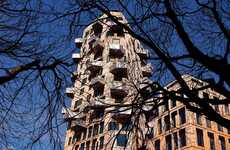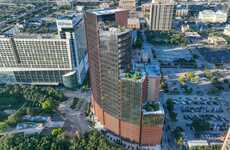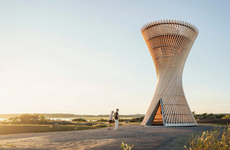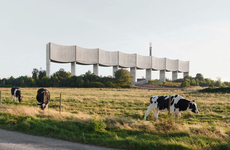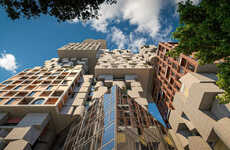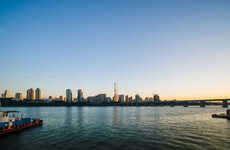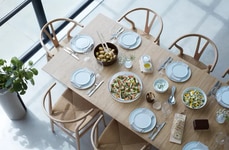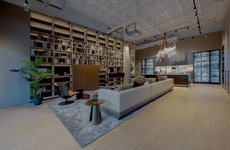
'Pole Star' Will Be the Tallest Building in Scandinavia
Rahul Kalvapalle — June 19, 2014 — Art & Design
Architectural firm Skidmore, Owings and Merril has won an international design competition to design the 'Polstjarnan' or 'Pole Star' skyscraper. The Pole Star residnetial building will be situated in the city of Gothenburg in Sweden, and will be the tallest building in Scandinavia.
The Pole Star building will feature a largely glass facade that twists and spirals before separating into four quarters towards the top end of the building.
The area surrounding the building will also be reinvigorated, with the designers planning to install parks, walkways and smaller administrative buildings which will sport green roofs. There will also be space reserved for retail and commercial spaces, restaurants, cafes and bars.
The design has been lauded for the elegant and understated nature of its facade, as well as the fact that it will be relatively inexpensive to produce.
The Pole Star building will feature a largely glass facade that twists and spirals before separating into four quarters towards the top end of the building.
The area surrounding the building will also be reinvigorated, with the designers planning to install parks, walkways and smaller administrative buildings which will sport green roofs. There will also be space reserved for retail and commercial spaces, restaurants, cafes and bars.
The design has been lauded for the elegant and understated nature of its facade, as well as the fact that it will be relatively inexpensive to produce.
Trend Themes
1. Twisting Architecture - The 'Pole Star' skyscraper's twisting and spiraling glass facade showcases the trend of architectural designs that challenge traditional shapes and angles.
2. Sustainable Urban Development - The inclusion of parks, walkways, green roofs, and retail spaces in the surrounding area highlights the trend of creating sustainable and vibrant urban environments.
3. Cost-effective Design - The 'Pole Star' building's relatively inexpensive production cost exemplifies the trend of finding innovative ways to create high-quality structures at a lower cost.
Industry Implications
1. Architecture & Construction - Architects and builders can explore new techniques for creating eye-catching structures that deviate from conventional designs.
2. Urban Planning & Development - Urban planners and developers can focus on integrating green spaces, retail areas, and sustainable features to enhance urban environments.
3. Sustainable Materials & Manufacturing - Companies in the materials and manufacturing sectors can develop cost-effective solutions to create aesthetically pleasing and environmentally friendly architectural structures.
0.9
Score
Popularity
Activity
Freshness



